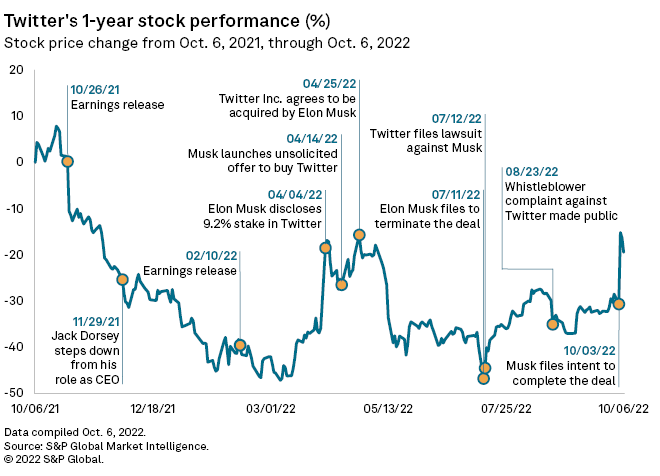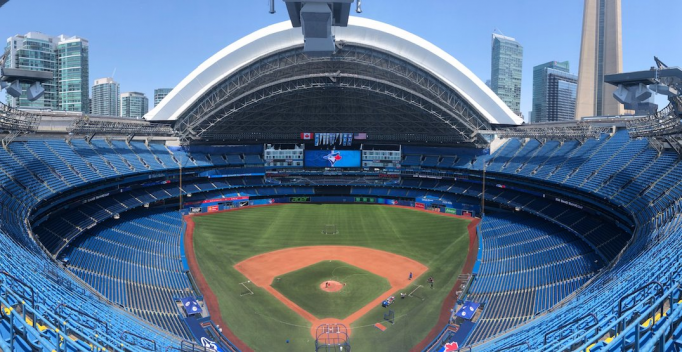U.S.-Iran Nuclear Talks: Stalemate On Key Issues

Table of Contents
Sanctions Relief and Verification
The issue of sanctions relief and its verification forms a major obstacle in the U.S.-Iran nuclear talks. Both sides have fundamentally different perspectives on how to proceed.
Iran's Demands for Guaranteed Sanctions Lifting
Iran insists on verifiable guarantees that the U.S. will not reimpose sanctions after a potential agreement. This is a critical demand for Iran, as the re-imposition of sanctions following the U.S.'s withdrawal from the JCPOA in 2018 severely damaged the Iranian economy. Iran seeks assurances that sanctions relief will be irreversible and credible.
- Specific sanctions impacting Iranian oil sales: Restrictions on oil exports have severely curtailed Iran's revenue streams. Iran demands the complete lifting of these sanctions and the ability to freely sell its oil on the global market.
- Banking restrictions: Access to the international banking system (SWIFT) is essential for facilitating trade and international transactions. Iran seeks full access to SWIFT to enable normal economic activity.
- Limitations on access to international markets: Sanctions have limited Iran's ability to participate in international trade and investment. Reintegration into the global economy is a central part of Iran's demands.
Iran desires mechanisms to ensure sanctions relief, including the role of international guarantors and robust dispute resolution mechanisms.
U.S. Concerns about Iranian Compliance and Transparency
The U.S. harbors significant concerns about Iran's past non-compliance with the JCPOA and demands stringent monitoring mechanisms to ensure future adherence to any new agreement. This stems from a lack of trust built up over years of strained relations and past instances where Iran was found to have violated the terms of agreements.
- International Atomic Energy Agency (IAEA) inspections: The IAEA plays a critical role in verifying Iran's nuclear activities. The U.S. demands comprehensive and unfettered access for IAEA inspectors to all Iranian nuclear facilities.
- Access to Iranian nuclear facilities: Transparency in Iran’s nuclear program is paramount. The U.S. insists on full and unrestricted access to all relevant sites.
- Reporting requirements: Iran must provide comprehensive and timely reports on its nuclear activities, including details on enrichment levels, centrifuge technologies, and fissile material stockpiles.
The U.S. argues that these robust verification measures are necessary to prevent Iran from pursuing a nuclear weapons program under the guise of a civilian nuclear energy program. The past actions of Iran are central to this perspective.
Nuclear Enrichment Levels and Scope
The level of uranium enrichment and the scope of Iran's nuclear program remain significant sticking points in the negotiations. The difference in acceptable levels and the implications for "breakout time" pose a substantial challenge.
Iran's Advanced Centrifuge Technology
Iran's continued development and stockpiling of enriched uranium, particularly using advanced centrifuges like the IR-6 and IR-8, is a major point of contention. These centrifuges can enrich uranium much faster than older models, raising concerns about Iran's ability to quickly produce weapons-grade material.
- Specific types of centrifuges: The advanced centrifuges possess significantly higher enrichment capacities than older generations of centrifuges.
- Uranium enrichment levels: The higher the enrichment level, the closer the uranium is to weapons-grade material. Iran's enrichment levels are a key indicator of its intentions.
- Implications for nuclear weapons capability: The faster enrichment capabilities raise concerns about a shortened "breakout time" – the time it would take Iran to produce enough fissile material for a nuclear weapon.
Iran maintains its enrichment program is for civilian purposes, while the U.S. expresses skepticism given the rapid advancement of technology and the potential for rapid weapons production.
U.S. Concerns about "Breakout Time"
The U.S. is deeply concerned about Iran's "breakout time" – the time it would take Iran to produce enough fissile material for a nuclear weapon. This is directly tied to the level of uranium enrichment and the type of centrifuges used.
- Acceptable breakout time thresholds: The U.S. seeks to ensure a sufficiently long breakout time to provide ample warning and time to react to any potential Iranian attempt to build a nuclear weapon.
- The impact of various enrichment levels on breakout time: Higher enrichment levels drastically reduce breakout time.
- The role of safeguards in managing this risk: Stricter IAEA safeguards and verification mechanisms are crucial to monitoring Iran's enrichment activities and extending breakout time.
The U.S. argues that a longer breakout time is essential to maintain regional and global security.
Regional Security Concerns and Proxies
Beyond the nuclear program itself, regional security concerns and Iran's support for proxies in the region represent significant hurdles in the U.S.-Iran nuclear talks.
Iran's Regional Influence and Support for Proxies
Concerns about Iran's regional influence and support for various armed groups remain a major sticking point. These groups operate in various countries and their actions destabilize the region. Furthermore, Iran's ballistic missile program is a source of considerable concern.
- Specific examples of Iranian-backed groups: Groups such as Hezbollah in Lebanon, Houthis in Yemen, and various Shia militias in Iraq are cited as examples of Iranian proxies. Their activities have fueled conflicts and instability.
- Their activities and the impact on regional stability: These groups' activities, including cross-border attacks and involvement in regional conflicts, contribute to regional insecurity and instability.
- Iran's ballistic missile program: Iran's development and testing of ballistic missiles raise concerns about its regional ambitions and the potential for proliferation of missile technology.
The U.S. argues these regional activities are inextricably linked to the nuclear issue, as a nuclear-armed Iran would significantly amplify these threats.
Linking the Nuclear Deal to Regional Issues
The U.S. and its allies have explored the possibility of linking a nuclear deal to broader regional issues, a position strongly opposed by Iran. This linkage is a point of major contention.
- Specific regional conflicts where Iran's involvement is a concern: Conflicts in Yemen, Syria, and Iraq are often cited as areas where Iran's influence is a concern.
Iran views this approach as an attempt to impose conditions unrelated to the nuclear issue, believing that such linkage undermines the possibility of a nuclear agreement. The potential for a broader agreement encompassing multiple issues remains highly contested.
Conclusion
The U.S.-Iran nuclear talks remain deadlocked over critical issues related to sanctions relief, nuclear enrichment levels, and regional security concerns. The lack of trust and significant differences in negotiating positions have severely hampered progress. Resolving these complex issues requires a concerted diplomatic effort, based on mutual respect and a commitment to verifiable agreements. Failure to reach a consensus carries significant risks for regional stability and global nuclear non-proliferation. Continued engagement and creative diplomacy are vital to preventing further escalation and potentially reviving the U.S.-Iran nuclear talks. A comprehensive understanding of the key sticking points outlined here is crucial for anyone following this critically important international issue. Stay informed on the latest developments in the U.S.-Iran nuclear talks to understand the evolving dynamics of this crucial geopolitical issue.

Featured Posts
-
 The Impact Of Musks Debt Sale On Xs Financial Future
Apr 28, 2025
The Impact Of Musks Debt Sale On Xs Financial Future
Apr 28, 2025 -
 The Two Texts Michael Jordan Always Sends Bubba Wallace
Apr 28, 2025
The Two Texts Michael Jordan Always Sends Bubba Wallace
Apr 28, 2025 -
 Recent X Financials Post Musks Debt Sale Key Takeaways And Analysis
Apr 28, 2025
Recent X Financials Post Musks Debt Sale Key Takeaways And Analysis
Apr 28, 2025 -
 X Corps Financial Reorganization Data From Musks Debt Sale
Apr 28, 2025
X Corps Financial Reorganization Data From Musks Debt Sale
Apr 28, 2025 -
 Boston Red Sox Doubleheader Coras Lineup Decision
Apr 28, 2025
Boston Red Sox Doubleheader Coras Lineup Decision
Apr 28, 2025
